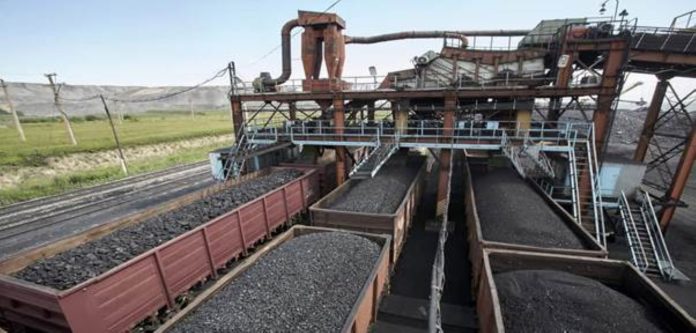The Supreme Court’s cancellation of 204 coal blocks in 2015 provided an opportunity for the Government to seek transformational change.
By G KISHAN REDDY
On this day, 26th May, in 2014, Shri Narendra Modi assumed office as Prime Minister for the first time, setting into motion the mission for India’s resurgence. Ever since, each sector has witnessed a massive transformation and renewed energy, coal being a prime example.
India’s double achievement of surpassing 1 billion metric tonnes in coal production and dispatch in the last financial year not only fortifies our energy security needs but also contributes significantly to a cost-effective, reliable, and continuous supply of power. This achievement by itself is a testament to the hard work of about 5 lakh workers directly involved in mining, apart from several more who indirectly contribute to the sector.
This milestone, however, is not an overnight transformation, but is the result of a decade of deep reforms. In 2014, the coal sector was in complete disarray. There was a severe deficit in coal production compared to its dramatically rising demand. Coal and lignite production saw a modest increase from 566 million tonnes in 2009–2010 to 610 million tonnes in 2013–2014. A cumulative annual growth rate of 1.89% was far from sufficient for our needs as a growing economy. This was being pegged as one of the biggest challenges for the newly elected Narendra Modi government. The Supreme Court’s cancellation of 204 coal blocks in 2015 provided an opportunity for the Government to seek transformational change. The introduction of commercial coal mining in 2020 followed, marking a new era of transparency and competition.
Ten years down the line, till March-2025, approximately 150 Coal Mines have been successfully auctioned. Since the launch of Commercial Coal Mining in June,2020 by the Hon’ble Prime Minister of India, 11 rounds have been completed and 12th round of commercial coal mine auction which was recently launched in March,2025 is in progress. The results speak for themselves: India’s coal production has seen a 70% growth over the last decade—a massive increase combined with transparency, efficiency, and sustainability. State governments have been one of the biggest beneficiaries with close to Rs. 2.5 Lakh crores in auction premiums and royalties being received into various state government exchequers.
The private sector as a strategic partner
After independence, there was a huge opportunity to ramp up coal production and herald a new era of growth. However, a lack of strategic understanding to effectively leverage the private sector was a detriment. Policies such as the freight equalization policy provided no incentive to set up industries close to mining regions, encouraging factories to be set up further away, which caused huge losses to the public exchequer.
On 17th May 1957, the then Minister of Steel, Mines and Fuel, Sardar Swaran Singh introduced the Coal Bearing Areas (Acquisition and Development) Bill in the Lok Sabha with the intent to gain greater public control over the coal mining industry and for the acquisition of land containing or likely to contain coal deposits. India’s coal production at the end of the First Five Year Plan between 1951 and 1956 stood at 38 million tons. Speaking on the floor of the house, the Minister observed “In the United Kingdom, which is 13 times smaller than our country, coal production is 230 million tons. If you take the United States of America, it is somewhere like 460 million tons a year. In the Soviet Union, it is about 390 million tons. Even China has recently increased its production to somewhere between 100 to 120 million tons per year.”
However, a lack of trust in the innovation and risk-taking capabilities of the private sector and the entrepreneurial spirit of the Indian youth resulted in coal production hovering at around 200 million metric tonnes in 1990. The commercial auction regime of today harnesses the private sector as a critical partner in a transparent and structured manner—a significant departure from the past.

Addressing environment and sustainability concerns
For decades, environmental concerns in the coal and mines sector were brushed under the carpet. However, over the past decade, sustainability has moved to the forefront. Initiatives such as large-scale afforestation, eco-friendly mining practices, and cleaner coal technologies have reduced the sector’s environmental footprint.
Diversification has gathered pace, with ongoing solar and wind projects, pumped storage plants, and Coal India’s first-ever non-coal critical mineral block acquisition. Blast-free coal mining now contributes 55% of the production, reducing pollution significantly. Further, the Cabinet has green lighted coal gasification with a financial outlay of Rs. 8,500 crores and plans to increase investment in this cleaner coal alternative and securing a sustainable energy future. Over the next few years, mine closure will remain a core priority and guidelines are being revised to enable seamless, progressive, and sustainable mine closure activities.
Recognizing the environmental advantages of underground mining like lower land disturbance, reduced emissions and extraction at greater depths, our government is giving it a major push. A clear roadmap to reach 100 MT by 2029–30 is already being implemented with full commitment.
Furthermore, the Ministry is fast-tracking First Mile Connectivity (FMC) projects, ensuring that 90% of coal will be loaded through mechanised and eco-friendly systems including conveyor belts, Silo and Rapid Loading Systems, and water sprinklers.
Despite the record coal production and dispatch in India, the per capita coal energy consumed by countries such as China, Australia, the USA, and the European block is significantly more than India’s consumption on a per capita basis. Even with regard to total coal energy consumed, India is a distant third after China and the developed OECD block of countries with a similar population. Coal’s contribution to the overall installed capacity of electricity has seen a downward glidepath. From contributing 60% of installed capacity in 2014–2015 it has now reduced to 47% while solar and other renewable sources have ramped up. However, coal as a critical primary source of energy will continue to power India towards a Viksit Bharat 2047.
Therefore, it must be our constant endeavour to strike a balance between the transition to renewable energy sources and, at the same time, to innovate and develop eco-friendly measures for sustainable coal production.
Coal sector for a Viksit Bharat 2047
India’s per capita electricity consumption of 1.10 MWh is less than one third the world average of 3.42 MWh. As we continue to grow and become a $5 trillion economy and further transform into a fully developed $35 trillion economy by 2047, our energy needs will continue to grow, and coal will continue to be a critical pillar in our energy mix.
India’s coal sector is not just fuelling India’s growth, it is also rewriting the rules of what is possible in a modern mining economy. India will soon be launching its first coal trading exchange. The platform will revolutionize coal accessibility for industries, enable seamless trading and transparent price discovery while ensuring stable supply of fuel to power our growing economy. The sector has also embraced cutting-edge technologies to streamline operations and improve governance. The DigiCoal initiative aims to digitise coal mines by deploying 5G technologies, AI-driven monitoring, GPS tracking for coal transportation, drone surveys, and digital auction platforms to ensure transparency apart from digital twins of coal mines to ensure safety and efficiency.
Once dismissed as a corruption-laden, bloated, and an inefficient monolith, the coal and mines sector has undergone a seismic shift over the last decade. As we look to the future, with a continued focus on modernization, international collaborations, and sustainable practices, the journey ahead is bound to witness even greater milestones, solidifying India’s role as a leader in the global mining and resource economy. (The author is Union Minister of Coal and Mines and represents the Secunderabad Lok Sabha constituency)




